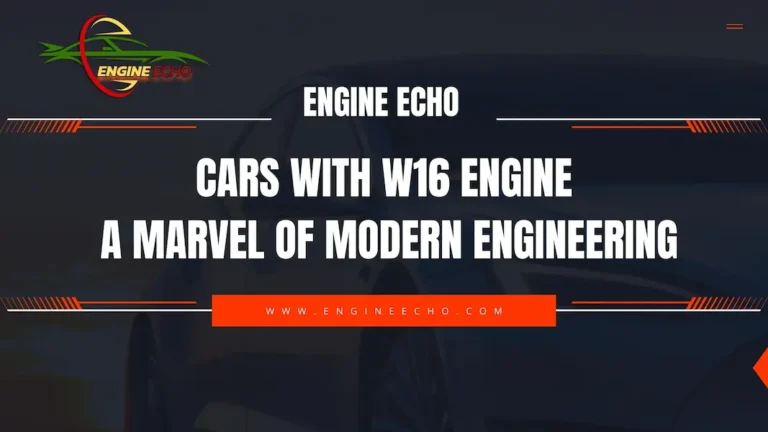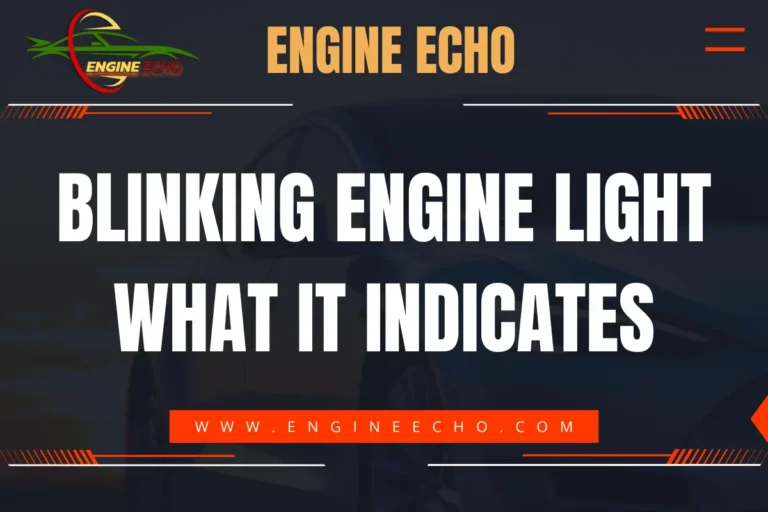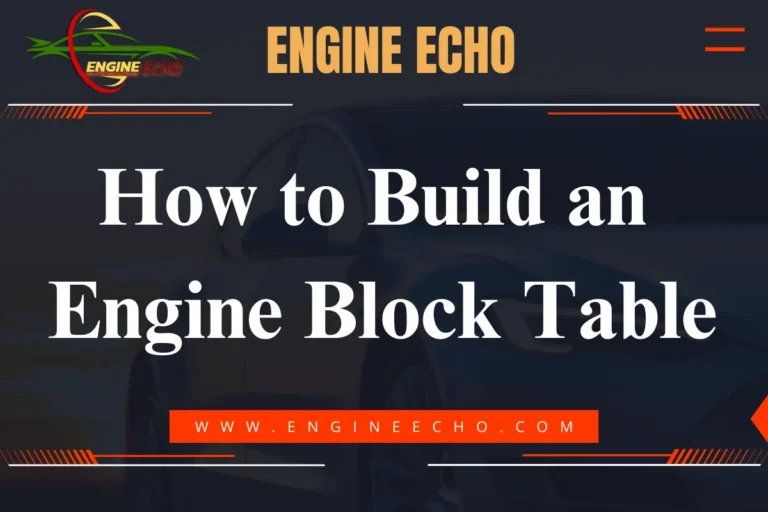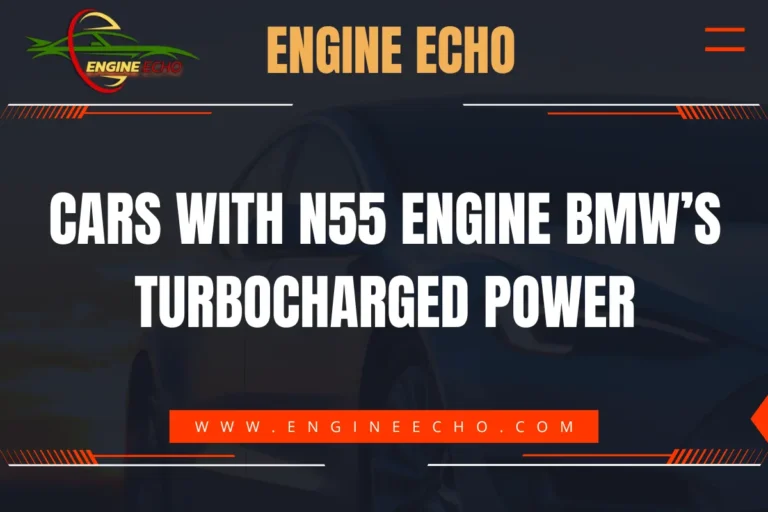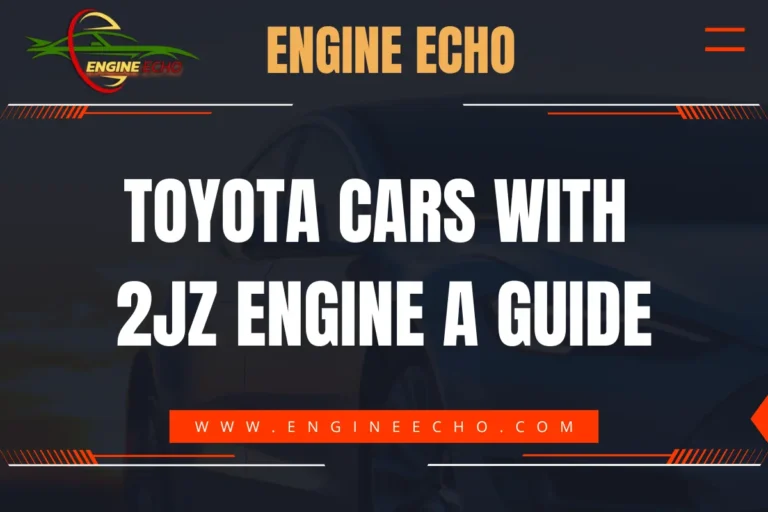What Is Engine Displacement and How It Affects Performance

Key Takeaways:
- Engine displacement refers to the total volume of air/fuel mixture an engine can draw in during one complete cycle.
- Larger displacement typically results in more power, but may compromise fuel efficiency.
- Displacement is measured in liters (L), cubic centimeters (cc), or cubic inches (ci), and plays a critical role in determining an engine’s torque and horsepower.
- Technological advancements like turbocharging and cylinder deactivation help optimize performance even in smaller displacement engines.
- Choosing the right displacement is key to balancing performance, fuel efficiency, and emissions for different driving needs.
Introduction
Let’s face it—when you’re behind the wheel, engine size matters. But does bigger always mean better? Not necessarily. Engine displacement might sound like a straightforward term, but it’s actually the key to how much power your car puts out and how often you’ll find yourself at the gas station. Whether you’re into sleek sedans or muscle cars, knowing how engine displacement affects performance can make all the difference in the kind of driving experience you want.
I’ve spent years tinkering with engines, from small, fuel-efficient cars to growling V8s. One thing I’ve learned is that the size of an engine doesn’t just define power; it defines how the vehicle feels on the road. In this article, I’ll share what engine displacement really means, how it’s calculated, and why it matters to you.
1. What is Engine Displacement?
Engine displacement measures the total volume of air and fuel an engine can move during one complete cycle of all its cylinders. It’s usually expressed in liters (L), cubic centimeters (cc), or cubic inches (ci). For example, a 2.0-liter engine displaces 2000 cc of air and fuel.
This might sound purely technical, but it plays a huge role in how your car feels. A larger displacement means the engine can burn more fuel, which typically results in more power. But—and this is important—it doesn’t always translate to better performance in real-world driving. From my experience, it’s more about the balance between power and how efficiently the engine works. Too big, and you could be burning more fuel than you need.
2. How Engine Displacement is Calculated
Let’s break it down simply. Displacement is calculated by measuring two things: the bore (the width of each cylinder) and the stroke (how far the piston travels). Combine these in a formula, and voila, you get the engine’s displacement:
Displacement = (π/4) × Bore² × Stroke × Number of Cylinders.
Now, I’m not one to whip out equations every time I think about engines, but this calculation can explain why two engines with the same number of cylinders can perform so differently. The bore and stroke design greatly influence the car’s character—whether it’s revving high or pulling hard from low RPMs.
3. Engine Displacement vs. Engine Size
Let me clear up a common misunderstanding: engine displacement isn’t the same as physical engine size. I’ve had countless conversations where people mix the two up. Displacement is about how much air and fuel the engine processes, not how big the engine looks under the hood. I’ve worked on compact engines that pack a serious punch, and large engines that don’t always impress as much as you’d think.
4. Types of Engine Displacement
Small Engines:
- Engines under 1.5 liters are common in compact cars and motorcycles.
- They’re fantastic for city driving where fuel efficiency is king. I’ve driven plenty of these and, while they won’t throw you back in your seat, they’re perfect for navigating traffic without guzzling fuel.
Medium Engines:
- Between 1.5 and 3.0 liters, these engines strike a balance between performance and efficiency.
- They’re the sweet spot for everyday drivers, offering enough power without excessive fuel consumption.
Large Engines:
- Anything over 3.0 liters is serious business. These engines roar with power, especially if you’re looking at V8s or V12s.
- They’re amazing for performance cars, but as someone who’s driven both types, I can tell you—you’ll pay for that power at the pump.
5. How Engine Displacement Affects Performance
Power Output:
Larger engines usually pack more punch, and trust me, there’s no thrill quite like slamming the pedal in a 5.0L V8. But does that mean small displacement engines are no good? Not at all. I’ve driven turbocharged 2.0L engines that provide more than enough kick for everyday driving, proving that it’s not just about size.
Torque Generation:
Torque is where you really feel the impact of displacement. More displacement often means more torque at low RPMs, which is essential if you’re towing or driving a heavier vehicle. From personal experience, driving a truck with a high-displacement engine gives you that extra grunt when you need it most.
Acceleration:
If you’ve ever punched the gas in a high-displacement muscle car, you know what I’m talking about. Larger engines provide quicker acceleration because they can move more fuel and air into the engine fast. It’s exhilarating, but again, I’ve driven small-displacement engines that use turbocharging to keep up, making them feel much larger than they actually are.
6. Fuel Efficiency Considerations
Fuel Consumption:
Bigger engines are a blast, but they sure like to drink. After owning both types, I can tell you that you’ll definitely hit the pump more often with a big engine. A 2.0L engine in a sedan, for instance, might get you 30 MPG, while a 5.0L V8 could leave you struggling to hit 20 MPG.
Efficiency Optimizations:
That said, modern engineering is closing the gap. Smaller engines, especially turbocharged ones, are providing the best of both worlds. I’ve driven 1.5L turbocharged engines that feel like much larger engines but with way better gas mileage. You get power when you need it, but efficiency when you don’t.
7. Engine Displacement and Emissions
Emissions Impact:
The environmental downside of larger engines is undeniable. More fuel burned means more emissions. I’ve always been mindful of this, especially as emissions standards tighten. Smaller turbocharged engines are increasingly popular because they offer similar power with fewer emissions.
Future of Emission Standards:
We’re also seeing a shift toward hybrid and electric vehicles, where engine displacement won’t matter at all. As someone who loves the mechanical side of things, it’s an interesting time—watching the industry evolve while still holding onto the joys of internal combustion.
8. Engine Displacement and Engine Types
Naturally Aspirated Engines:
Before all this turbocharging technology, the only way to get more power was to increase displacement. My first experience with a naturally aspirated V8 was unforgettable. The sound, the feel—nothing quite compares to a big engine working without any forced induction.
Turbocharged and Supercharged Engines:
Now, smaller engines with forced induction are changing the game. I’ve driven plenty of turbocharged cars where a 2.0L engine feels like a much larger one, delivering performance that’s just as satisfying, with better efficiency.
9. Displacement and Engine Technologies
Variable Displacement Engines:
If you’ve ever driven a car with variable displacement, you know how cool it is. The engine shuts off cylinders when you don’t need them, saving fuel without you even noticing. I remember the first time I drove a truck with this feature—it was seamless, and the fuel savings were a welcome bonus.
Cylinder Deactivation:
Cylinder deactivation is becoming common, especially in larger engines. When you’re cruising, you don’t need all that power, so why waste fuel? It’s these kinds of innovations that are making big engines more practical.
10. Engine Displacement in Performance Tuning
Aftermarket Tuning:
For enthusiasts, increasing displacement through boring or stroking is the ultimate performance upgrade. I’ve worked on engines where adding displacement gave a serious boost in horsepower, but it’s not for the faint of heart. It’s costly and can affect reliability if not done right, so I always recommend considering your goals carefully.
Racing Applications:
In motorsports, engine displacement rules the day. From rally cars to drag racing, displacement often dictates what class a car can compete in. I’ve seen how even small changes to displacement can impact performance dramatically.
11. Case Studies
Small Displacement, High Efficiency:
The Honda Civic 1.5L Turbo is a perfect example of a small-displacement engine that punches above its weight. I drove one for a weekend and was impressed by its balance of power and fuel efficiency—it felt like a much larger engine but sipped fuel like a compact.
Large Displacement Powerhouse:
On the other hand, the Ford Mustang GT’s 5.0L V8 is iconic for a reason. I’ve had the chance to drive one on an open highway, and it’s pure adrenaline. There’s no replacement for that feeling when a big V8 roars to life.
12. Choosing the Right Engine Displacement for Your Needs
Vehicle Use Case:
Your driving habits should dictate your engine choice. If you’re mostly commuting in the city, a smaller, more efficient engine will save you money and fuel. But if you’re like me and love the power of a bigger engine for weekend adventures, a large displacement V8 might be worth it.
Long-Term Considerations:
Think long-term. I’ve learned that larger engines often come with higher maintenance costs and lower fuel efficiency. If you’re planning to keep the car for years, balancing power with practicality is key.
Conclusion
Engine displacement isn’t just a number—it’s the heart of how your car drives. In my experience, whether you go for a big engine or a smaller one really depends on what you’re looking to get out of your ride. A small turbocharged engine can be perfect for daily driving, while a large V8 might be what you need for sheer power. In the end, it’s all about finding the right balance for your needs.
FAQs
Q1: What is engine displacement, and how is it measured?
Engine displacement is the total volume of air and fuel an engine can move during one cycle of its cylinders. It is measured in liters (L), cubic centimeters (cc), or cubic inches (ci).
Q2: Does a bigger engine always mean better performance?
Not necessarily. While larger engines typically produce more power, modern technologies like turbocharging allow smaller engines to perform comparably while being more fuel-efficient.
Q3: How does engine displacement affect fuel efficiency?
Larger displacement engines usually consume more fuel because they require more air and fuel to generate power. Smaller engines tend to be more fuel-efficient.
Q4: Can turbocharging compensate for a smaller engine displacement?
Yes, turbocharging forces more air into the cylinders, enabling smaller engines to generate more power, similar to a larger displacement engine without needing the extra fuel consumption.
Q5: What are the environmental implications of larger engine displacements?
Larger engines produce more emissions because they burn more fuel. Smaller engines with technologies like turbocharging and cylinder deactivation are generally better for the environment.
Thanks for checking out this article on EngineEcho.com! Hope you found this article: "What Is Engine Displacement and How It Affects Performance" helpful! If you liked it and want to dive into more car engine topics, head over to our homepage. There's always something new to discover in the world of engines. Enjoy your reading journey!
Check out our previous article: Understanding Displacement in an Engine

